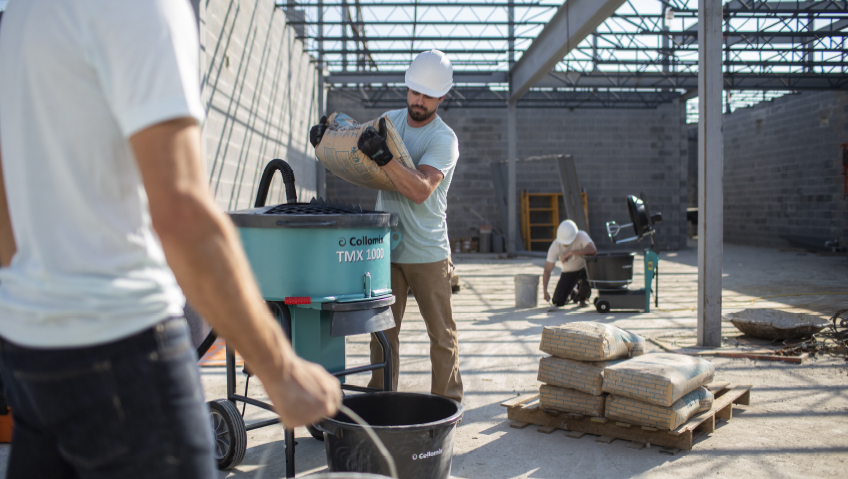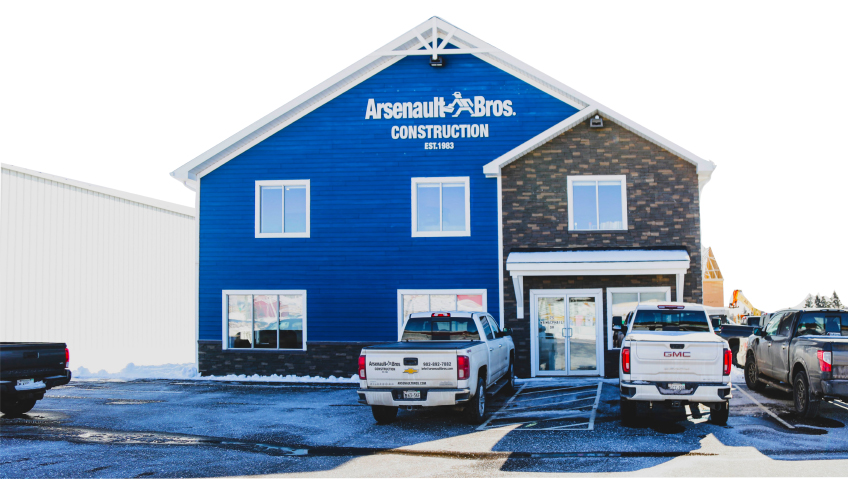Founded in 1974 in Germany, Collomix established itself in the United States and Canada in 2012. Small-batch mixing was not as common in North America at the time, and Collomix has spent much of the last decade focused on raising awareness about the benefits of small-batch mixers. A family company and a market leader, Collomix is trusted around the world as the only company focused solely on mixing.
The traditional method of using a drill and a bucket is not an efficient way to mix material for a construction project. Having applied its expertise in Europe for many years, Collomix manufactures machines that are designed to properly mix many different types of material.
Recently, the company expanded its product line to include the AQiX, which is a tool designed to measure the exact amount of water needed in the mixture, consistently. “We kind of look at it like a math equation. You start with the material like concrete, mortar, or whatever is in the bag, plus water, plus mixing, equals results. Up to this point, we have been the mixing part of the equation and we still are, but now with the AQiX we’re part of the water part of the equation as well,” says Al Karraker, President of Collomix.
The AQiX connects to a standard garden hose and doses out the exact amount of water that the bag of material requires. The volume can be adjusted to one tenth of a quart, gallon, or liter.
Generally, any imperfections that arise in small batch mixing are the result of mistakes made in the mixing process rather than defects in the material itself. The two most common ways that mixing can go wrong are when the material is not mixed thoroughly enough, or when the amount of water added is not consistent with the amount specified. Collomix has helped its customers solve the first problem with small batch mixers, and now it’s helping them solve the second problem. With the help of a dosing instrument like AQiX, the person doing the mixing will be able to measure the exact amount of water every time, resulting in consistent, high-quality results.
The companies who make and sell the mixing material also appreciate the consistency offered by the AQiX. Customers tend to be much happier with the material overall when it is properly mixed because the results are more consistent. Rather than relying on a person’s memory to use the same amount of water with each batch, the AQiX reliably produces the same mix every time, resulting in less waste, fewer mistakes, and better quality.
In the past, other bucket manufacturers have endeavored to mitigate human error when measuring water, but developed products that are not as foolproof as the AQiX. “As far as we know, this is the only way that you can do this consistently, and consistency is the key. If you’re just doing one mix it might be okay, but if you are doing one after another and these materials are physically next to each other, like if you’re doing a floor leveling job, it all has to blend,” says Karraker.
Introduced originally in Europe, the AQiX was released in North America in March of 2021. The initial plan was to hold the launch one year ago at the World of Concrete 2020, but the demand in Europe was overwhelming and inventory quickly ran out. Collomix pushed the release date back one year and ramped up production to catch up with the growing demand.
The AQiX operates on two AA batteries which can last a full year with normal use. It’s designed to connect to and work with the level of water pressure in a standard garden hose, so setup is fast, easy, and accessible in most situations.
Approximately 95 percent of the 120 Collomix employees are located in Germany, although the company is steadily growing its customer base and distribution footprint in North America. Its two North American warehouses are located in Milwaukee, Wisconsin, and Cambridge, Ontario, outside of Toronto.
Using a standard hand-held electric drill to mix materials in a bucket is a common approach in North America, but it comes with a number of major drawbacks. An electric drill is designed for high speed and low torque, but mixing works best with low speed and high torque. Using a drill to mix will often cause it to overheat and break. Worse, the mixed material may end up inconsistent. When there are a number of batches to mix, often the mixer will get sore leaning over the bucket. This results in the last few batches being mixed less than is required. Since mixing depends on a chemical reaction, those last few batches may end up being lower quality.
Certainly, awareness of the importance of small batch mixers has grown in North America. However, the traditional method of using a drill in a bucket to mix material continues to be an ongoing issue. Collomix is dedicated to taking the time to recognize this and demonstrate the benefits of proper mixing to others in the industry.
Ten years ago when the company first started on this continent, the response was quite reluctant. The hesitancy has eased over time and in the last year, customers have begun to reach out to Collomix after seeing its products on job sites. Those looking for efficient, sustainable, and quality results in small batch mixing are increasingly looking to Collomix.
Collomix defines a small batch as one using between one and four bags of material. For construction projects that require mixing within these parameters, the company releases educational information on the correct tools and methods to optimize mixing results.
There are a number of different shapes to the paddles when mixing and people often pay no attention to their various functions. One of the most important messages Collomix has for small batch mixers is that the paddles are designed for specific uses, because certain materials need to be mixed in a certain way. “Some materials are mixed from the bottom up, some are top down, and some are side to side, and we are trying to, among other things, educate people about what style of paddle goes with what material,” explains Karraker.
The company aims to provide its customers with a program of units that work together and make the mixing process more efficient for their specific needs. For one of its customers, Collomix created a customized booklet labeling all the materials they may use and ranking the best choices of paddles. Karraker explains that if the correct paddle is used there will be better results, and all parties involved will be pleased.
“For example, if you’re going to be doing floor leveling, it should be mixed from the top down so you don’t get air bubbles. Therefore, if you don’t know that and you mix from the bottom up, it’s full of air and you pour that out and it’s supposed to be smooth on the floor but now it has bubbles all over it. It’s a disaster, but if you don’t know, you don’t know. That’s one of the things we’re trying to bring to the party, just that little bit of education,” he says.
Small batch mixing is continuing to grow in popularity in North America, and Collomix is demonstrating how it can be done consistently and efficiently. As the company makes progress in raising awareness, it looks forward to how the industry will move into the future. Its new product, the AQiX, fills a void in the market, and Collomix will continue to innovate and manufacture products that maximize the quality of small batch mixing in the years to come.






